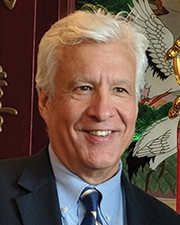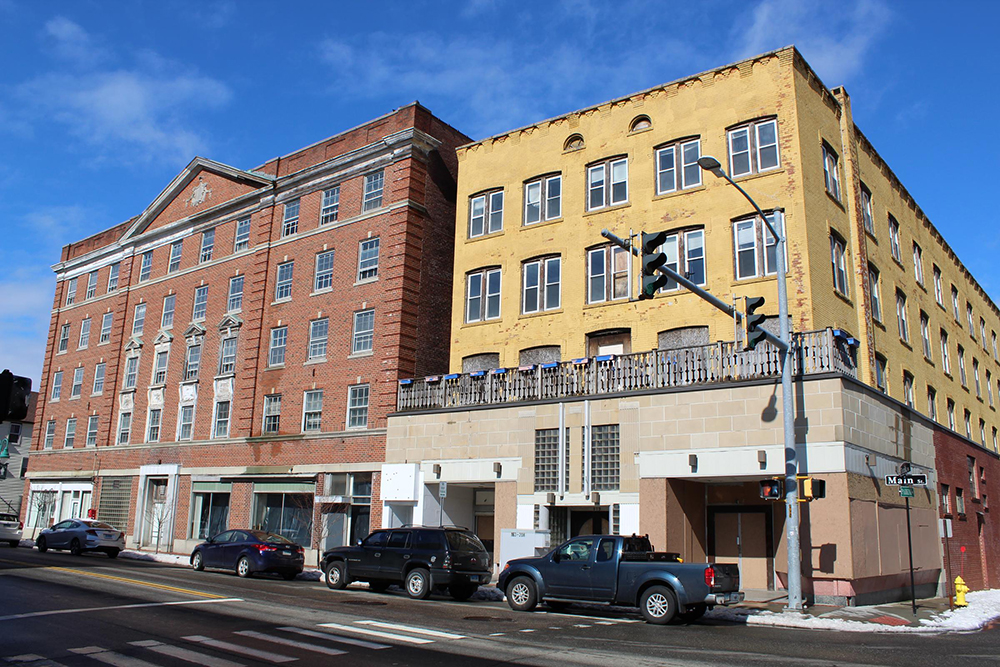
Like many of Connecticut’s mill towns, Windham experienced a severe economic downturn when the textile industry left a generation ago. Windham, the “Thread City” was not immune to the ramifications that accompany such economic flight- unemployment and a precipitous drop in property values.
Recently, however, Windham, and it historic downtown area of Willimantic, have turned the corner. The decreased property values that had hampered economic growth for two decades have, over the last few years presented themselves as opportunities for investors. The town of Windham has also taken a pro-growth posture towards business development. The combination of these two factors has led to resurgence in the town’s previously dormant retail, manufacturing and Main Street development sectors.
Perhaps most emblematic of the Windham Renaissance are two developments that are taking long-abandoned sites and bringing them back to life.

University Plaza
1315 Main St. was once a busy shopping center on west Main St.- home to a Stop and Shop Supermarket. After Stop and Shop relocated to an adjacent parcel to construct a “super store,” 1315 Main St. lay fallow. In 1998 a not-for-profit agency purchased the property. Although fully-leased, for most of its tenure, little improvement was done to the exterior of the 50,000 s/f building and the parking lot. Also, its tenants included other non-profits- a situation, as you would expect, did not yield the real or personal property taxes that is anticipated from a 200 parking space shopping center located in the center of the town’s commercial district.
Then, in 2017, Northeast Retail Leasing and Management Co., LLC saw the type of opportunity that I spoke of earlier. Leveraging the location and area demand, and aided by a tax deferral agreement with the town, Northeast Retail, began the task of developing University Plaza.
Within 18 months, the center was fully leased, and by June of this year, the tenants – Planet Fitness, Dollar Tree, Moe’s Southwest Grill and Eblens – were open for business.
Finally, in an era where tax incentives have fallen under sharp scrutiny, under for profit ownership, even with the tax deferral, the center is yielding almost double the taxes it was under prior ownership.

Martin Kelly and the Hooker and Hale Buildings
While some progress had been made on Willimantic’s Main St. business district, for the most part, success was primarily evidenced by the two iconic restaurants that were located at the west end of the historic district- the Willimantic Brewing Company (Willibrew) and Cafemantic.
The highly visible missing tooth in the smile of Willimantic’s Main St. was the Hooker Hotel and Hale Buildings. Eastern CT State University (ECSU) abandoned the use of Hale first, as a dormitory in the late 70’s citing the deteriorated condition of the building and the unreasonable cost of bringing it up to code.
The Hotel Hooker was the focus of the now infamous 60 Minutes and Hartford Courant segments on heroin use in town. The building had lost any semblance of the luxury hotel that had existed at the turn of the 20th century. In essence, all that remained was a monument to Heroin Town.
Enter New Jersey developer, Martin Kelly. Again, seeing the opportunities associated with a town that has 5,500 students at Eastern Connecticut State, 20,000 students at nearby UCONN, and which was located in one of the newly designated Opportunity Zones, Kelly’s vision entails 400 market-rate units with retail storefronts on the ground floor. Kelly is purchasing four other Main St. properties in order to reach the 400-unit goal.
The town supported the development and the razing of the Hooker; and, with the construction of a 292-space, Intermodal Transportation Center (ITC) in close proximity to the development, Willimantic’s Main St. will soon achieve the goal of many New England’s downtowns–one where individuals can live, shop, eat and be entertained in walking distance to each other.
The town of Windham has also committed other resources to its revitalization. In addition to the ITC, the town has created town green where the vacant Jillson Sq. sat for many years. The green features decorative fencing and the “Shaboo Stage,” with capacity for up to 8,000 patrons. Jillson Sq. is now one of the largest outdoor concert and event venues in the state.
The two highlighted developments, while indicative of the larger resurgence taking place in Windham, only scratch the surface. Anchor employers such as Windham Hospital, ECSU, General Cable (recently acquired by the multi-national Prysmian Group), and United Abrasive continue grow. Manufacturers like Prime Materials/Flouropolymer and MicroPrecision/Nathan Airchime have significantly expanded both space and operations.
In all aspects, Windham is going through a renaissance. The town once known as the gateway to Connecticut’s “Quite Corner” is starting to make some noise- the type of sounds that are reverberating with developers and investors alike.
Jim Bellano is director of economic development for the town of Windham.








